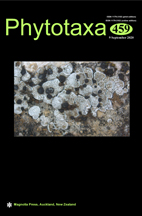Abstract
A new lichenicolous genus Kukwaea is introduced for a species discovered on Cetraria islandica from coniferous forests in European and Asian parts of Russia. The new fungus is characterized by its cupulate, brown ascomata with grey to blackish disc surrounded by brownish grey hairs, exciple of textura angularis type, with crystals in the lower part, with granulose excipular hairs obtuse at the tips, simple to forked paraphyses, Calycina-type asci, and hyaline, aseptate ascospores. The DNA sequence data confirmed its placement in Helotiales, but the exact affiliation remains open. A worldwide key for lichenicolous fungi occurring on Cetraria s. str. is provided.

